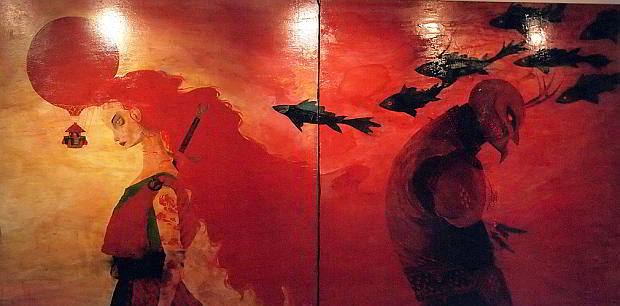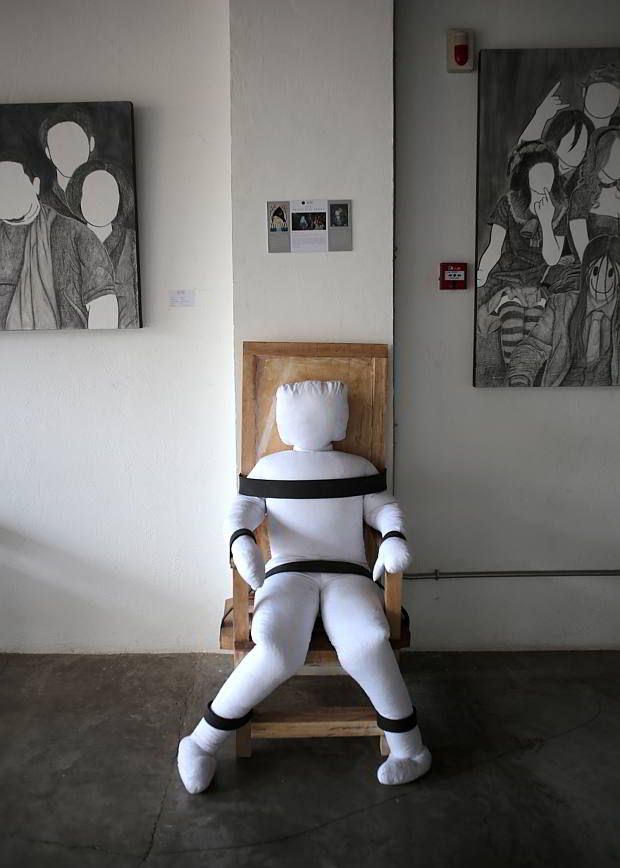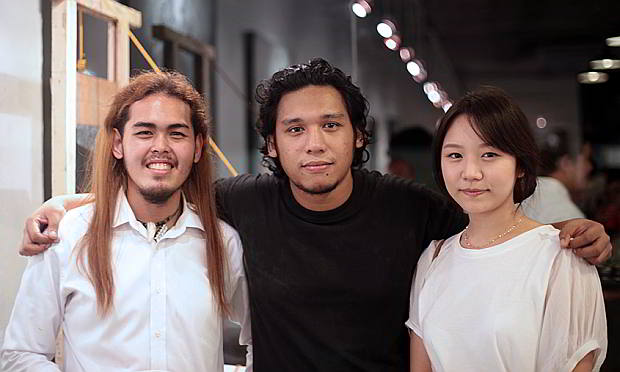Some books in the 90s, which dealt with “lucid dreaming,” guided one to consciously glide into his dream, mark and remember certain indicators in a dreamscape, revisit them, and then figure out what they impart—its meaning—in real life.
Somehow this is what came to mind after I viewed the three-week series of exhibits collectively called “The Bright Eyes Series” at the Qube Gallery of The Henry Hotel, which ran from March 3 to 24.
I asked one of the exhibiting artists, Jiyun Kim, who’s known to friends as Cathy, why the series was called “The Bright Eyes.” It was the gallery owner’s idea, she said. Her exhibit, which was slated for the second week, was called “Talesbox: A Container of Emotions.”
Surreal, symbolic and feminine, is how Kim describes her art. Her paintings, which appear as surreal near-minimalist self-portraits, express her emotions at the time she was working on them. She considers them her visual diaries—not unlike selfies made in dreamscapes.
Before Kim’s exhibit was “Imaginary Friends” by Tom Jopson. Jopson also featured surrealist portraits. Compared to Kim’s, Jopson’s works are more vivid and depicted groups, the activities of his peers. His Gothic sensitivity and use of Medieval allusions give his work otherworldly charm. He paints his friends as animals or Middle Kingdom characters. Movies, he said, are among his subliminal influences, “The Lord of the Rings” and “Harry Potter” series, for instance.
The third featured artist was Kevin Cabrera, who had the most flair for drama. He had installations of “tortured” dummies, echoing his black-and-white works that render a man in a “smiley” mask torturing people. At first, you’d think that his works are an ode to serial killer movies. And then he claims that Mr. Smiley is his alter ego, and his “victims” are those who make fun of him. Not unlike a hybrid of Dante’s “Inferno” and Quarantino’s “Pulp Fiction.”
Of the three, I consider Jopson as the most accomplished craftsman. The artist plans to improve his craft by exploring other venues of visual art, including collaborative work, sculpture, digital art and film.
Kim’s works are the most refreshing of the three. First, they do not carry the burden of dealing with popular Western culture (such as the Medieval allusions of Jopson and Cabrera’s
Mr. Smiley). Also, Kim’s subdued colors have a calming effect, suggesting an Oriental, more serene rendition of Frida Kahlo’s (screaming) pieces.
Cabrera, whose works seem to be the most emotionally charged among the three, surprisingly sees himself as a teacher in the future.
Congrats to Qube Gallery for grouping these vibrant young visual artists in a rather inspiring and thought- provoking series. But why did Qube call the series “Bright Eyes”? I can only make a guess —that is, the works make you dream with your eyes wide open.
RELATED STORIES:







